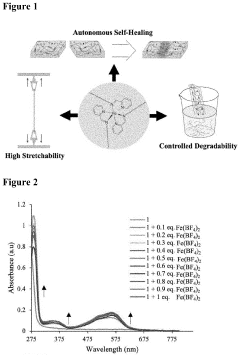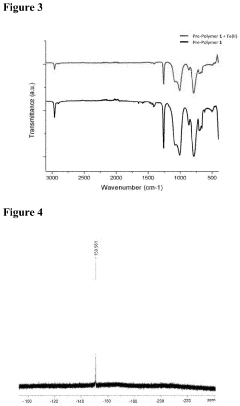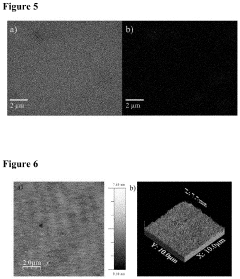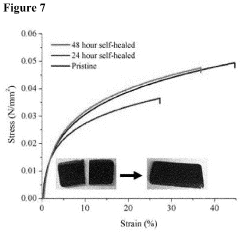Research on self-sealing and self-healing systems - Eureka
SEP 30, 20243 MIN READ
Generate Your Research Report Instantly with AI Agent
Supercharge your innovation with Patsnap Eureka AI Agent Platform!
Self-Sealing and Self-Healing Systems Overview
The primary objective is to develop self-sealing and self-healing systems that can autonomously detect and repair damage, extending the lifespan and reliability of various structures and materials.
This technology has significant potential applications across industries such as aerospace, construction, automotive, and electronics. By incorporating self-healing capabilities, materials and components can recover from physical damage, cracks, or other forms of degradation, reducing maintenance costs and improving safety.
This technology has significant potential applications across industries such as aerospace, construction, automotive, and electronics. By incorporating self-healing capabilities, materials and components can recover from physical damage, cracks, or other forms of degradation, reducing maintenance costs and improving safety.
Market Demand for Self-Sealing and Self-Healing Technologies
- Growing Demand for Self-Healing Materials Self-healing materials are increasingly sought after in industries like aerospace, automotive, and construction due to their ability to extend product lifespan and reduce maintenance costs.
- Emerging Applications New applications are emerging, such as self-sealing coatings for pipelines, self-healing concrete for infrastructure, and self-repairing electronics for consumer devices.
- Cost Savings and Sustainability Self-healing technologies can significantly reduce the need for frequent repairs and replacements, leading to cost savings and promoting sustainability through reduced waste.
- Safety and Reliability In critical applications like aircraft components and nuclear power plants, self-sealing and self-healing systems can enhance safety and reliability by preventing catastrophic failures.
- Market Growth Projections The global market for self-healing materials is projected to grow at a CAGR of around 25% from 2022 to 2030, driven by increasing adoption across various industries.
Current State and Challenges in Self-Healing Systems
- Current Limitations
Self-healing systems face several limitations, including:
- Limited healing capabilities for complex damage
- Slow healing rates for large-scale damage
- High costs associated with self-healing materials
- Technical Challenges
Key technical challenges include:
- Developing self-healing materials with improved mechanical properties
- Enhancing healing efficiency and speed
- Integrating self-healing capabilities into existing systems
- Geographical Distribution
Research on self-healing systems is primarily concentrated in:
- United States and Europe (leading in academic research)
- Japan and South Korea (strong focus on industrial applications)
Existing Solutions for Self-Sealing and Self-Healing
01 Self-healing Concrete and Repair Materials
Various materials and methods for self-healing and repairing concrete structures, including inorganic compounds, organic-inorganic hybrid waterproofing materials, and ultra-high performance concrete (UHPC) that can heal cracks and defects, with some materials also having anti-corrosion and waterproofing properties.- Self-healing Materials with Microcapsules: Materials containing microcapsules filled with healing agents that can be released upon damage, allowing self-healing of cracks or defects in various matrices like polymers, concrete, or coatings.
- Self-sealing and Self-healing Systems for Structures: Systems designed for structures like concrete, pipelines, or vessels, involving materials or coatings that can autonomously seal and repair cracks or leaks, potentially incorporating sensors for damage detection and healing agents for self-repair.
- Self-healing Materials for Biomedical Applications: Materials designed for biomedical applications like bone or tissue repair, incorporating bioactive agents or self-healing properties to promote regeneration and healing of damaged tissues or bones.
- Self-healing Polymers and Composites: Polymers or polymer composites with self-healing abilities through mechanisms like reversible bonding, microvascular networks, or shape memory effects, enabling self-healing of cracks or damage.
- Self-healing Coatings and Surface Treatments: Coatings or surface treatments that can be applied to various substrates like metals, concrete, or plastics, providing self-healing capabilities through healing agents, shape memory materials, or other functional components.
02 Self-repair Systems for Memory and Electronic Devices
Techniques for built-in self-repair (BISR) and self-healing capabilities in memory arrays, integrated circuits, and electronic devices, allowing detection and repair of defects or errors in memory cells, circuits, and components, improving reliability and longevity.03 Self-sealing and Self-repair Materials for Pipes and Conduits
Self-sealing and self-repair materials and methods for repairing pipes, conduits, and well casings, including self-pressurizing seals, meltable repair materials, puncture-repair seals for tires, and materials for repairing non-linear conduits.04 Self-healing Polymers and Composites
Self-healing polymer and composite materials with microcapsules containing healing agents, self-repair interfaces, and anti-corrosion capabilities, capable of autonomously repairing cracks, damage, and corrosion without external intervention.05 Self-repair Systems for Autonomous Vehicles and Robotics
Methods and systems for self-repair capabilities in autonomous vehicles, robots, and intelligent agents, including self-capability aware route planning, self-healing systems for consumer premises equipment, and agent self-repair within intelligent agent systems.
Key Players in Self-Healing Technology Industry
The competitive landscape for self-sealing and self-healing systems is characterized by a mix of academic institutions and companies at various stages of technological maturity. Leading players include Massachusetts Institute of Technology, Nanyang Technological University, and Tsinghua University, which are at the forefront of research and development. Companies like Amorepacific Corp., KIST Corp. (South Korea), and LG Innotek Co., Ltd. are also significant contributors, focusing on commercial applications. The market is still emerging, with substantial growth potential as the technology matures and finds applications in diverse sectors such as construction, electronics, and healthcare.
Massachusetts Institute of Technology
Technical Solution: MIT develops self-sealing and self-healing materials using microcapsules with healing agents for aerospace and civil engineering applications.
Strength: High innovation and application in critical fields. Weakness: High cost and complexity in manufacturing.
Nanyang Technological University
Technical Solution: NTU focuses on self-healing polymers and concrete using microcapsules or vascular networks for infrastructure and construction.
Strength: Effective in extending the lifespan of materials. Weakness: Limited to specific types of materials.
Core Innovations in Self-Healing Materials
Stretchable, degradable and self-healing polymers through a combination of imine bonds and metal coordination
PatentActiveUS20210061958A1
Innovation
- The ability of the polymer composition to heal itself without the need for external stimuli, making it suitable for various applications where self-healing is desired.
- The flexibility to modulate the stretchability of the polymer composition by changing the parameters or conditions during preparation, allowing for different levels of stretchability depending on the desired application.
- The potential for the polymer composition to degrade and be more readily disposable, making it environmentally friendly for disposal.
Regulatory Landscape for Self-Healing Technologies
Self-sealing and self-healing systems are emerging technologies that aim to enhance the durability, reliability, and lifespan of materials and structures. These systems possess the ability to autonomously detect and repair damage, reducing maintenance costs and extending operational lifetimes. The market demand for such systems is driven by industries like aerospace, automotive, construction, and infrastructure, where safety and longevity are critical. Key challenges include developing smart materials with self-healing properties, integrating sensing and actuation mechanisms, and optimizing the healing process for different environments and damage types. Potential innovation directions involve exploring new self-healing materials, bio-inspired healing mechanisms, and integrating machine learning for autonomous damage detection and repair.
Environmental Impact of Self-Healing Systems
Self-sealing and self-healing systems are emerging technologies that aim to enhance the durability and resilience of materials and structures. These systems possess the ability to autonomously detect and repair damage, extending the lifespan and reducing maintenance costs. The market demand for such systems is driven by industries like aerospace, automotive, and infrastructure, where safety and reliability are paramount. Key challenges include developing smart materials with self-healing capabilities, integrating sensing mechanisms, and optimizing repair processes. Potential innovation directions involve exploring bio-inspired designs, incorporating nanotechnology, and leveraging machine learning for damage prediction and adaptive healing strategies.
Unlock deeper insights with Patsnap Eureka Quick Research — get a full tech report to explore trends and direct your research. Try now!
Generate Your Research Report Instantly with AI Agent
Supercharge your innovation with Patsnap Eureka AI Agent Platform!



